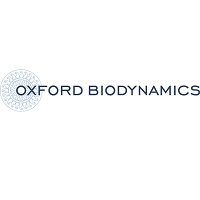Oxford BioDynamics Plc (LON:OBD), a biotechnology company focused on the discovery and development of biomarkers, based on regulatory 3D genome architecture, using its liquid biopsy platform EpiSwitchTM, has today announced that Dr Jon Burrows has been appointed as Group Chief Executive Officer, effective 23 March 2020. Dr Burrows brings over 25 years of industry experience with an established track record in oncology and personalised medicine within big pharma, biotech and molecular diagnostics companies. Jon will lead the Company from a base in Maryland, USA, a location which will help OBD to further expand its US presence.
Jon joins OBD from Oncology Partners, a consulting and clinical advisory firm focused on providing strategic counsel to development stage pharma, biotech, medical devices and diagnostic companies, which he co-founded. Previously Jon was President and CEO of OncoPlex Diagnostics, a leader in clinical proteomics for oncology. Under Jon’s leadership OncoPlex was transformed from a private, pre-revenue stage company into a thriving clinical diagnostics business with marketed products, which was ultimately acquired by NantOmics in May 2015. From 2007 to 2009, he was Director of Business Development and Interim Head of the Translational Diagnostics Business Unit at Ventana Medical Systems, and subsequently Director of Pharma Operations at Roche, following the $3.4 billion acquisition of Ventana Medical Systems by Roche in 2008. His early career was in oncology drug development and the development of molecular diagnostics for precision medicine.
Christian Hoyer Millar has been OBD’s Chief Executive Officer since 2007 when he co-founded the Group with Dr Alexandre Akoulitchev and Dr Aroul Ramadass. Christian has grown OBD significantly during his tenure, including leading its successful admission to trading on AIM in December 2016, raising gross proceeds of £20 million. In his new role, as Executive Director, Christian will continue to work to further develop OBD as a leader in its field. Jon will work closely with Christian as the Group looks to realise the full potential of its EpiSwitch™ technology, through partnering with leading organisations globally.
Jon holds a Bachelor’s degree in Industrial Chemistry (Colour) from the University of Leeds (UK), and a Master’s degree in Physical Chemistry and Ph.D. in Cell and Molecular Biology from the University of Nevada. He completed Postdoctoral studies in the laboratory of Dr David Perlmutter at Washington University in St Louis, Children’s Hospital before becoming the inaugural Alpha One Foundation Young Investigator for Clinical Research at Washington University Medical School in St Louis.
Stephen Diggle, Interim Chairman of Oxford BioDynamics, commented:
“We’re delighted to welcome someone of Jon’s calibre to Oxford BioDynamics. He has a proven ability to grow businesses, and deep expertise in the oncology space, both highly valuable qualities as we move into the next phase of growth.
“I would like to acknowledge the fundamental role that Christian has had and the exceptional contribution he has made in growing Oxford BioDynamics into a successful, public business with a strong balance sheet and vast potential. We are delighted he will continue to play a major role within OBD and I look forward greatly to him working with Jon to grow Oxford BioDynamics into a significant healthcare company.”
Dr Jon Burrows, incoming Chief Executive Officer of Oxford BioDynamics, said:
“Oxford BioDynamics is a company founded on incredible science, allowing its partners unrivalled insights across many therapeutic areas and disease indications and at all stages of drug discovery, development and commercialisation. Its technology is driving forward the promise of precision medicine for patients globally. I’m delighted to join such a talented team and look forward to leading the Company through its next inflections.”
Christian Hoyer Millar, current Chief Executive Officer of Oxford BioDynamics, added:
“Having been part of the founding team of Oxford BioDynamics in 2007, it brings me a great deal of satisfaction to be in a position to hand over to someone of Jon’s quality. As with any business in our sector, the US is the most important market for our product. Therefore, Jon’s experience and proven ability in scaling companies will help OBD in its drive to become the undisputed global leader in this field. As I move into my new executive role want to take this opportunity to thank everyone who has supported me during the last 13 years and I look forward to extending the same support to Jon.”

